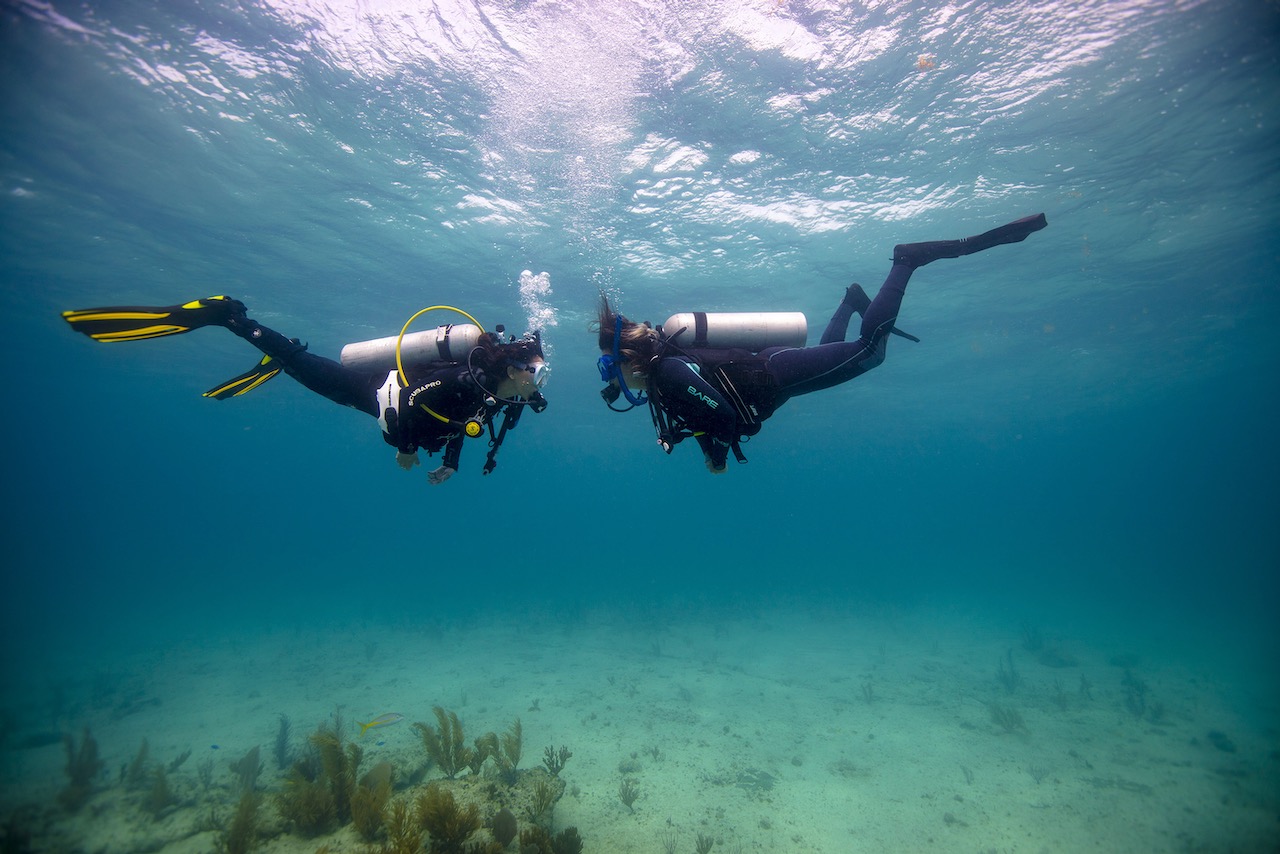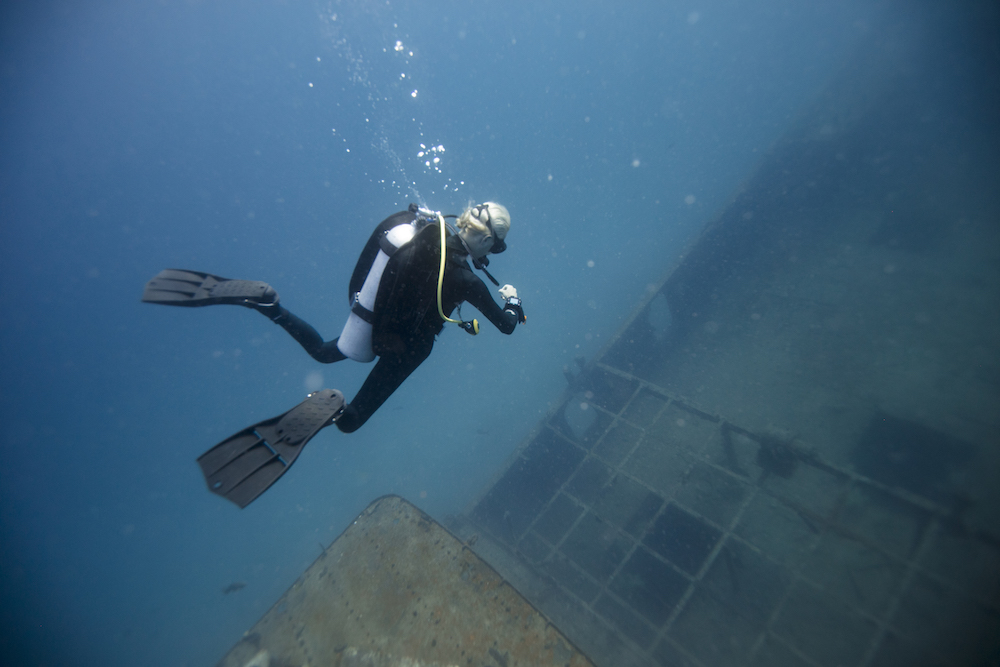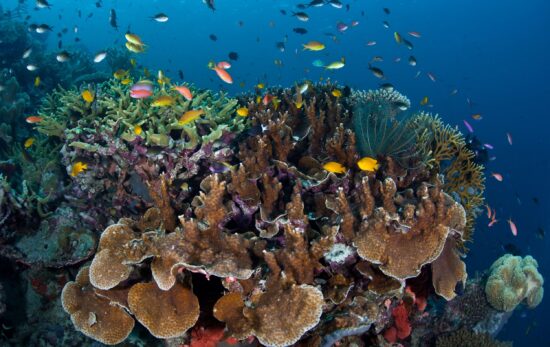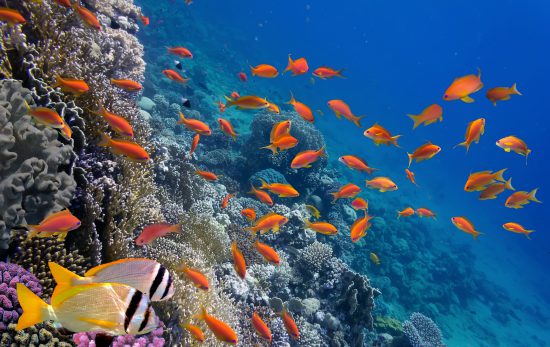Have you ever wondered what is in a scuba tank? While many assume that divers carry 100% oxygen to survive underwater, the reality is quite different. In this article, we’ll explore the type of gas found in scuba tanks (cylinders) and how it affects a scuba diver. We’ll also examine the concerns related to breathing air at high partial pressures (i.e. really deep) and how dive computers and special dive tables help divers reduce risk during their underwater adventures. So, let’s dive in and discover the science behind scuba diving!

What Type of Gas is in a Scuba Tank (Cylinder)?
If you’ve never been scuba diving before, you at least know scuba divers descend wearing at least one tank (officially known as a gas cylinder). What is often confused or misrepresented is what is inside these tanks. Many non-divers assume scuba tanks are filled with 100% oxygen. In reality, recreational divers typically use air (approximately 21% oxygen and 79% nitrogen) or Enriched Air Nitrox (ranging from 22% to 40% oxygen with the remainder filled in with nitrogen). You can learn more about Nitrox diving here.
In summary, scuba divers never use pure oxygen. Note that technical diving has a much more varied range of gases, including pure oxygen. But, for the purposes of this article, let’s stick with the most common type of scuba diving, which is recreational diving.
*Scuba Facts*
If scuba divers were to submerge using 100% oxygen, the oxygen would shortly become toxic. The reason is that oxygen becomes toxic as pressure increases beyond a certain point. At this point, the accepted maximum depth for the use of 100% oxygen underwater is 20 feet (6 meters). Because there is less oxygen using air (21% oxygen and 79% nitrogen), a diver could descend deeper than 200 feet (60 meters) before the oxygen pressure is the same as the oxygen pressure at 20 feet (6 meters) using 100% oxygen. (That said, there are other issues with this scenario, so 200 feet/60 meters is still deeper than divers would typically use air. The depth limit for air diving is approximately 130 to 165 feet/40 to 50 meters, depending several variables.)

Wait – Oxygen is Toxic?!
To understand how oxygen can become toxic, we need to understand partial pressure. We can estimate the maximum depth for a gas or mix of gases by understanding partial pressure. Partial pressure refers to the pressure of a specific gas in a mixture of gases.
When you go diving, you breathe a mix of gases, like oxygen, nitrogen, and, in tec diving, sometimes helium. Each gas adds to the total pressure, but they also have their own individual pressure. This is known as partial pressure and is each gas’ part of the total pressure.
Furthermore, while diving, you’re exposed to water pressure, in addition to the air pressure on the surface. The pressure on Earth’s surface is one atmosphere of pressure (1 ata). Every 33 feet (10 meters) you descend underwater adds another atmosphere of pressure. So at 66 feet (20 meters), for example, the pressure is 3 ata – 1 ata of air and 2 ata of water.
As the total pressure increases, the partial pressure of each gas also increases. The partial pressure is determined by multiplying the total pressure by the proportion a gas makes up of a mixture. For example, breathing air, oxygen is 21% (.21). At 66 feet/20 meters, the pressure is 3 ata. So, the partial pressure of oxygen at 66 feet/20 metres = 3 X .21 =.63 ata. To prevent oxygen toxicity, oxygen partial pressure is kept below 1.4 ata (or 1.6 ata for some applications). At 66 feet/20 metres with pure oxygen (100% =1.0), the partial pressure = 3 X 1.0 = 3.0 ata – which is way over the toxicity limit.
Enriched Air Nitrox, which we mentioned above, has more oxygen than air does. Oxygen is added, not because a diver wants to use more oxygen, but for less nitrogen. This allows divers to stay underwater longer, all else being the same. But, because there is more oxygen, the deepest allowable depth is shallower. This is due to the fact that a diver reaches 1.4 ata oxygen partial pressure shallower compared to air. For example, using EANx36 (which consists of 36% oxygen), the partial pressure of oxygen at 66 feet/20 meters = 3 X .36 = 1.08 ata – which is much closer to the limit, but still acceptable. The deepest allowable depth depends on the proportion of oxygen. Divers learn to plan the depth limits as part of their training as PADI Enriched Air Divers.

In conclusion, scuba diving is an exciting and rewarding activity that allows you to explore the beauty of the underwater world. However, it is important to understand the science behind scuba diving. By learning about the type of gas in scuba tanks, you can better prepare yourself for your next diving adventure. If you’re interested in becoming a certified scuba diver and learning more about the intricacies of scuba diving, consider signing up for the PADI Open Water Diver course. Alternatively, if you’re already a diver and want to learn more about gas mixes, the PADI Enriched Air (Nitrox) Diver is the course for you.
With proper training and knowledge, you’ll be able to enjoy the wonders of the ocean. So, what are you waiting for? Start your course online today!



